Established in 2007, with offices in Cambridge, Milton Keynes, Leeds, and Bristol, Aaron Wallis is a committed independent sales recruiter focusing on permanent, contract and interim sales recruitment.
Our dedicated and friendly sales team are always on hand to deliver a tailored service to guarantee results.

Second Interview Presentations
Page Overview:
At Aaron Wallis Sales Recruitment, we help you master the art of second‑interview presentations by guiding you through content, format, and delivery best practices. This page outlines how to articulate your motivations for the company and role, highlight the unique strengths you bring, and structure your plan while respecting the Golden Rule, avoiding proprietary specifics and keeping your approach general and strategic. You'll also learn to leave a polished physical copy of your presentation, boosting recall in the critical 24 – 48 hour decision window.

It is the norm to be asked to prepare a presentation at the second stage for a sales vacancy. Often, a topic is already requested, but more often than not, the topic is 'Why are you right for the job?'
I would go so far as to say that a good discipline is to prepare a second interview presentation along these lines, even if you haven't been asked to prepare one. The effort in creating a presentation that aligns with your quality, skills, and experience against the job requirements will give you the edge on the day and will really make you think that you are making the right decision in joining this organisation.
It shouldn't take more than two hours to assemble, and you can rely on it if the meeting isn't going as planned.
If you've gotten ahead of yourself and perhaps need advice on first interviews, you can have a look at all our advice on 'how to WOW at a first interview'.
GOLDEN RULE: However, an absolute DON'T is to use your presentation as a 'safety blanket' when you haven't been asked to prepare one, i.e. Interviewer: 'How do you expect to penetrate into the following markets....?' You (tucking into your briefcase), well, I have a presentation here, that..... ONLY use the presentation during the meeting as a last resort.
The presentation should be short (no more than ten minutes if you have to deliver it) and no more than ten sheets or slides. It should contain:
-
Why you want to work for the company – key facts, direction, etc.
-
Why do you want this particular job – the opportunity, etc.
-
What benefits you can bring to the company – experience, strengths, values, etc.
-
Your training and development requirements to succeed
-
Why you are the right person for the role
You may also want to include your approach and how you would structure your working day/week/month/quarter.
How would you impose key performance indicators upon yourself to attain and exceed targets?
GOLDEN RULE 2: The employer knows their business better than you. Keep it general; avoid quoting specific accounts that you could bring to the company, such as account values.
GOLDEN RULE 3: Always take at least three printed copies of your presentation to the meeting and hand them out at the end. The adage of remembering just 25% of what you've heard after 24 hours is accurate, and most hiring decisions are made after a period of deliberation that is typically 24-48 hours. Your presentation document might just have the memory-triggering tags to make the decision swing your way!
Obscure second interview questions
You may be asked to prepare a presentation with a title such as 'The features and benefits of a ping pong ball' or 'Nature or Nurture, what is more important?' or 'You work for a paperclip manufacturer and you have to sell the features and benefits of a paperclip' (all of the three detailed here are factual cases!)
Why do employers do this? It may appear churlish, but it's a demonstration of lateral thinking, willingness to go the extra mile, creative thinking, negotiation, commercial flair and above all, salesmanship. It's also a test of commitment to the job - how much effort will you put in to 'land the deal'? Are you prepared to 'jump through the hoops'?
If you fancy a list of common interview questions, we've assembled a list of the most common interview questions here.
Obscure Presentation Example: The Paperclip Presentation
As an example, I'm going to use 'You work for a paperclip manufacturer and you have to sell the features and benefits of a paperclip' (which incidentally, is the standard second interview presentation for a major household FMCG brand).
Many people treat the presentation as a game, making it fun and lighthearted, but they invariably don't get offered the job. Others put together a jazzy presentation on paper clips, their variety of uses and pitch accordingly. Where they fail is that unless you understand the need, you can't sell anything – the adage of " diagnosing the illness before prescribing the medicine!'
A perfect way to execute this exercise is as follows. Please adjust it accordingly to the 'obscure presentation' you may have been asked to prepare.
-
First off. Enter the meeting. 'Thank you very much for inviting me here today to discuss your urgent paperclip requirements. I understand from our discussions last week that today you are looking to agree on a preferred supplier of paper clips. I understand that Ben you are the Group Purchasing Director, and Fred is the Group Finance Director. I also understand that you are looking to make a decision on a supplier today – is that correct?' (By doing this, they cannot use the objection of - we're not the right person, we're not in a position to make a decision today, etc.)
-
Begin the presentation with an overview of 'Paperclips 'R' Us' (or whatever), covering its history, services, including holding stock, 3-day delivery, the ability to supply in volume, the quality of the product, and the ability to provide bespoke solutions to meet individual needs.
-
It's imperative that YOU ask THEM early on 'What is your budget' - then you might find that you can easily sell to them on price.
-
Collect a variety of paper clips (different shapes, styles, colours, etc.).
-
Ask them to touch the product (you can't beat a kinaesthetic sale!)
-
Paint a couple, put Tippex on a couple, wrap some coloured tape around some – whatever. I know it sounds somewhat strange, but going this extra mile will make the difference!
-
Then probe to understand their needs - prepare 15 or so questions around the type of paperclip that they require, the volume, added value services, etc.
-
Prepare a slide per type of paperclip so that you can go into the details of their preferred clip and skip past the ones that aren't right for their need and explain why
-
If asked for the price, answer something like - 'I know that price is important to both of us, but can we park this just for a moment until I fully understand your needs. I am confident that I will be able to propose a price that is both attractive and works for both of us.
-
Then pitch the product - the features, examples, benefits of the paperclip that is the solution to their need (have a brainstorm with yourself about exactly what benefits there could be – the amount of paper it can hold, flexibility, uniqueness of the colour, etc., think of every imaginable feature and benefit!)
-
Then ' semi close' - Do you agree that this is the right paperclip for you? Are there any further features that they would like you or me to detail? What do we have to do to make the deal today?
-
Prepare bartering chips beyond price, including stock holding, delivery time, volumes, and payment terms. If you negotiate down on price, ensure you give nothing away and always get something in return. Remember, negotiation is where both parties leave happy, and it's a win-win, not where one is battered on price, that's called discounting!
-
If you are getting nothing but positives, then close it down
-
Get agreement on product, volume, additional required services, total cost, etc.
-
Take it a step further by pre-preparing an order form - take it out of your briefcase and have them sign it on the spot!
-
If they don't agree to this as a minimum, obtain agreement for the next meeting and an agenda outlining your proposed actions. This could include revisiting your R&D department to tailor the product accordingly, exploring cheaper raw materials to reduce costs, etc.
-
Pre-prepare a price list so that when you get their signature on the dotted line, you can detail how well you negotiated to secure the deal!
-
Remember, never give anything away for nothing - everything is tradable and barter accordingly to secure a price and service that is right for both parties!
-
Go the " extra mile and a half' by creating a logo for the paperclip business, an order form, a business card, and a price list - it'll only take an hour or two, but could make the difference between you and the other interviewees.
-
Thank them for their time (and their business); close the meeting and job done!
As you can see, we have now taken a somewhat trite and childish presentation title into a 'full-on' business pitch. This approach will demonstrate how you will succeed in their organisation by questioning, understanding needs, pitching a product, negotiating, closing, and other key business activities.
Technology & Virtual Interviews
With remote and hybrid working now the norm, many second interviews take place online, so it's important to adapt your presentation accordingly. Make sure your camera and microphone are of good quality, and set up in a quiet, well-lit space with a professional background. Test your tech in advance and familiarise yourself with platforms like Zoom, Microsoft Teams or Google Meet to ensure smooth screen sharing. Keep slides simple and visually engaging, avoiding too much text. Most importantly, maintain eye contact by looking at the camera rather than the screen, use natural gestures, and speak clearly to keep the interviewers engaged. A polished virtual presentation will help you stand out and demonstrate your ability to communicate effectively in a digital environment.
Good luck with putting together your second interview questions, and we hope that you found this helpful!
Navigate our Second Interview Advice
by clicking the following icons:
- How to WOW at Second Interview
- Researching for Second Interviews
- Second Interviews - How to Negotiate Salary Package
- How to Close at Second Interview
- Great Tips for Second Interviews
- Second Interview Presentations
- How to Follow Up on an Interview
- How to Wow at Second Interview - Video and Transcript
Date published: 8th August 2025

Search jobs
With hundreds of jobs available, now is the time to look for your perfect position

by Sophie Jones
Associate Director

About the author
Sophie Jones
Sophie is an Associate Director at Aaron Wallis, and her main focus is to help clients find the best sales talent while ensuring that candidates secure the best professional fit. Sophie doesn't just fill vacancies; she strives to understand her clients' business goals, and she identifies candidates who will not only excel in the role but also contribute to the company's long-term success. Maintaining open communication is crucial, and Sophie ensures that clients are well-informed throughout the recruitment process, addressing any concerns and ensuring that expectations are met. She's a trusted advisor, and her ability to build bridges, solve problems, and advocate for success makes her an invaluable asset in the World of sales recruitment.
Please call us to discuss your next move
From our blog
Our employers say...
Our candidates say...




